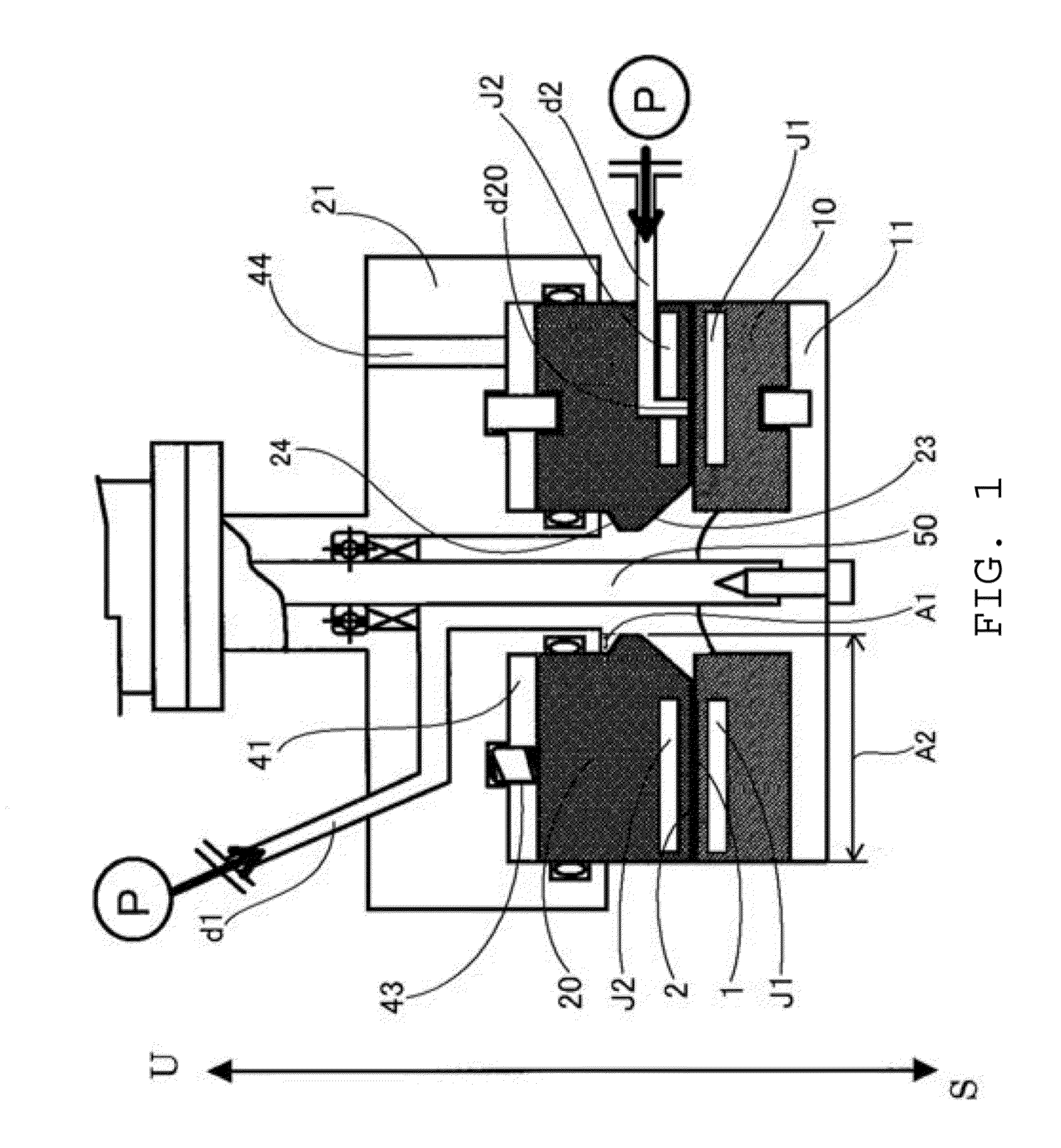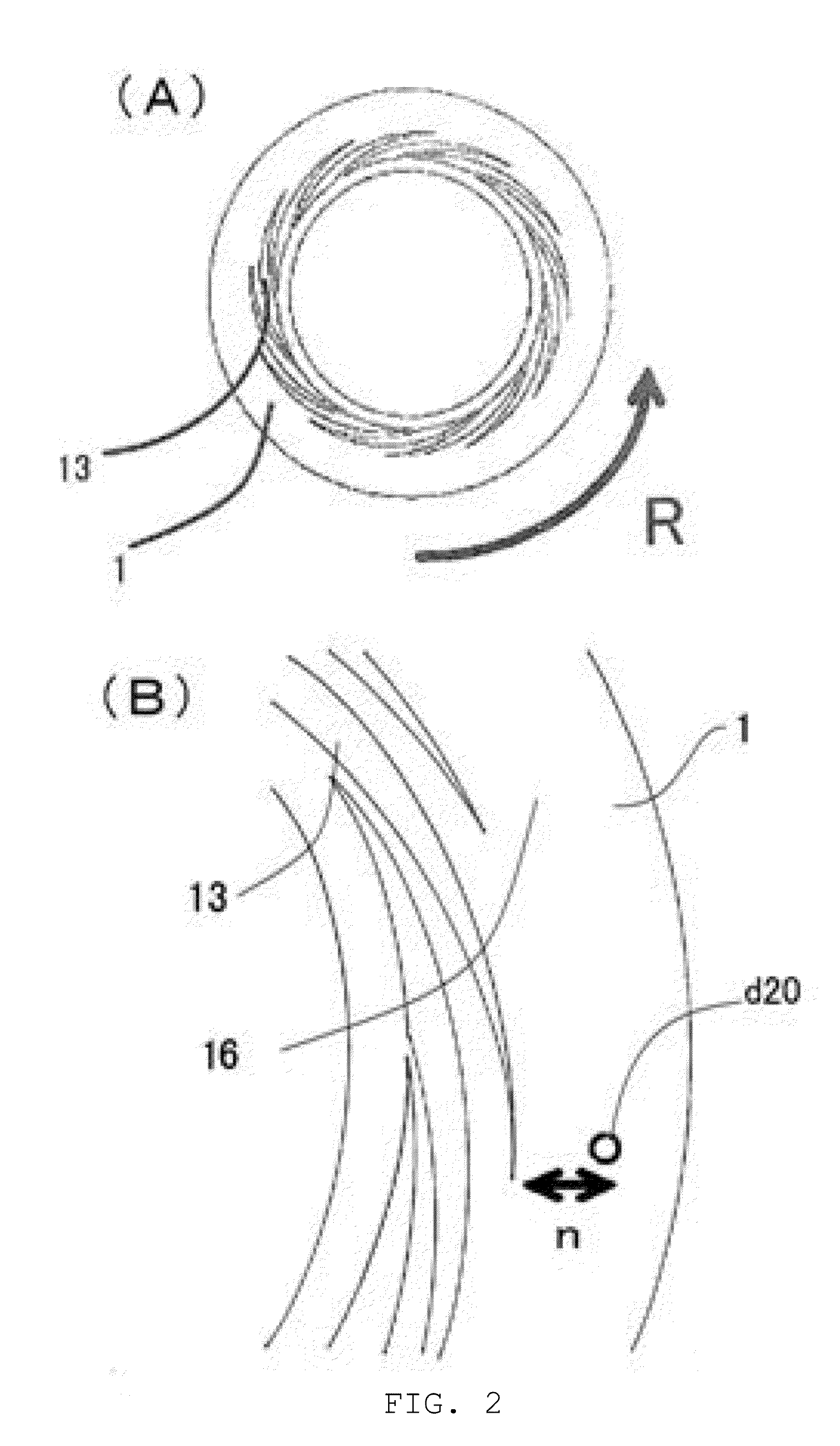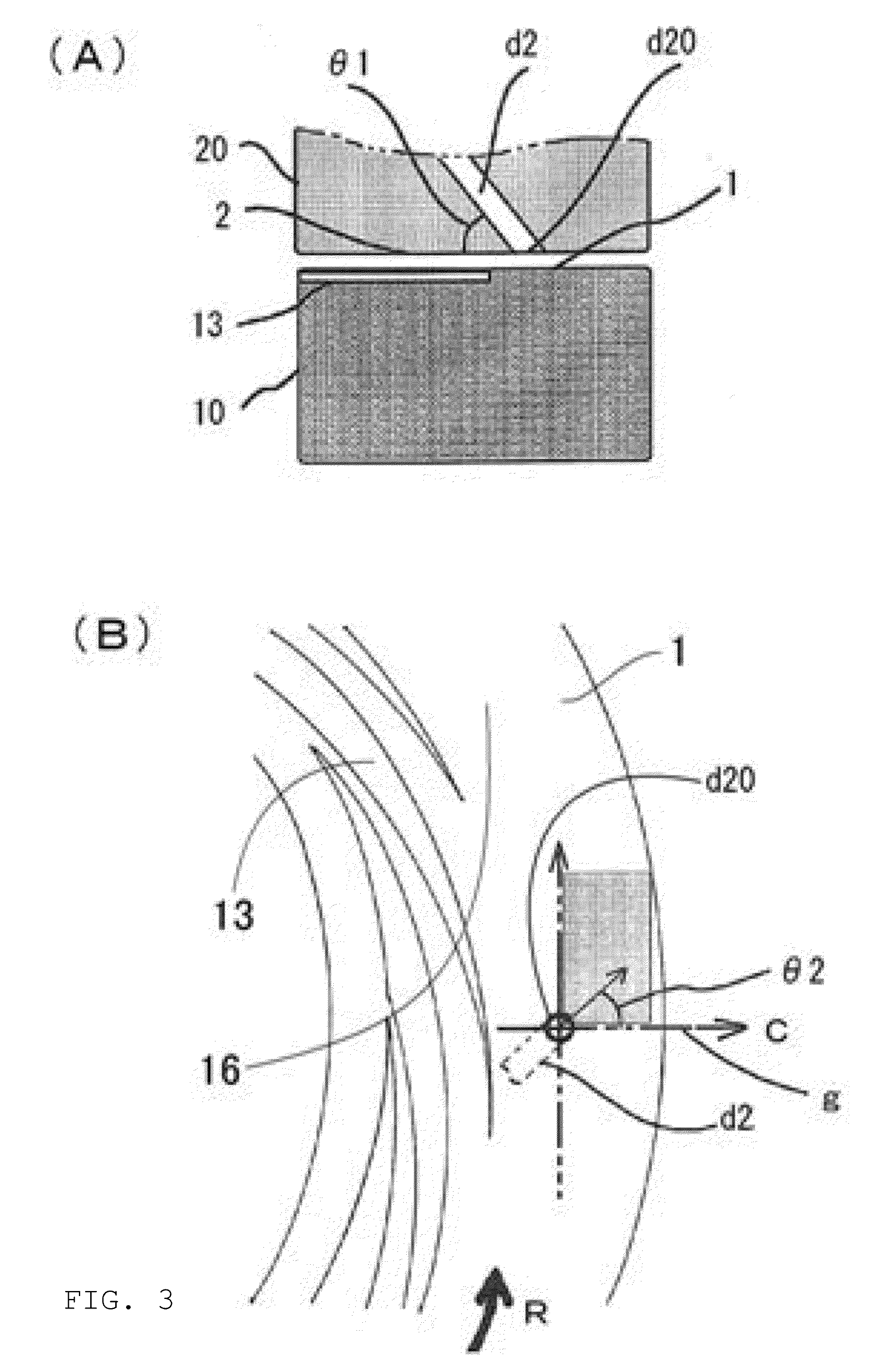Method for producing substances to be separated having controlled amounts of dopant element
a technology of dopant element and separation method, which is applied in the preparation of zinc compounds, separation processes, alkali metal hydroxides, etc., can solve the problems of difficult production of metal oxide nanoparticles having uniform and good re-dispersibility, difficult coarse particles, and difficult to achieve homogeneous amount of dopant element in each particle, etc. , to achieve the effect of low cost, low energy consumption and low cos
- Summary
- Abstract
- Description
- Claims
- Application Information
AI Technical Summary
Benefits of technology
Problems solved by technology
Method used
Image
Examples
example 1-12
[0124]In Example 1-12, by using a reaction apparatus, as shown in FIG. 1, with which diffusion, stirring, and mixing are effected in a thin film fluid formed between the processing surfaces 1 and 2 arranged opposite to each other so as to be able to approach to and separate from each other, at least one of which rotates relative to the other, a raw material solution and a solvent for separation are mixed, whereby a reaction accompanied with crystallization is carried out in this thin film fluid.
[0125]From the center, as a first fluid, a mixed solvent of methanol and toluene, which were mixed with the condition shown in Table 1, was sent as the solvent for separation with a supply pressure of 0.50 MPa, a backpressure of 0.04 MPa, and a rotation number of 1700 rpm; and a raw material solution having zinc oxide powders dissolved in a 30% aqueous sodium hydroxide was introduced as a second fluid into between the processing surfaces at a rate of 5 mL / minute. The first fluid and the secon...
example 13-14
[0129]In Example 13-14, by using a reaction apparatus, as shown in FIG. 1, with which diffusion, stirring, and mixing are effected in a thin film fluid formed between the processing surfaces 1 and 2 arranged opposite to each other so as to be able to approach to and separate from each other, at least one of which rotates relative to the other, a raw material solution and a solvent for separation are mixed, whereby a reaction accompanied with crystallization is carried out in this thin
[0130]From the center, as a first fluid, a mixed solvent of methanol and toluene, which were mixed with the condition shown in Table 2, was sent as the solvent for separation with a supply pressure of 0.50 MPa, a backpressure of 0.01 MPa, and a rotation number of 1700 rpm; and a raw material solution having silver acetate and manganese acetate dissolved in an aqueous acetic acid solution was introduced as a second fluid into between the processing surfaces at a rate of 5 mL / minute. The first fluid and t...
example 15-17
[0133]In Example 15-17, by using a reaction apparatus, as shown in FIG. 1, with which diffusion, stirring, and mixing are effected in a thin film fluid formed between the processing surfaces 1 and 2 arranged opposite to each other so as to be able to approach to and separate from each other, at least one of which rotates relative to the other, a raw material solution and a solvent for separation are mixed, whereby a reaction accompanied with crystallization is carried out in this thin film fluid.
[0134]From the center, as a first fluid, a mixed solvent of aqueous sodium hydroxide (50% NaOH aq), methanol, and hexane (solubility of sodium hydroxide is lower than in methanol, and sodium hydroxide is insoluble in hexane), which were mixed with the condition shown in Table 3, was sent as the solvent for separation with a supply pressure of 0.30 MPa, a back pressure of 0.01 MPa, and a rotation number of 1700 rpm; and a raw material solution having magnesium oxide (MgO) dissolved in nitric ...
PUM
| Property | Measurement | Unit |
|---|---|---|
| distance | aaaaa | aaaaa |
| distance | aaaaa | aaaaa |
| surface roughness Ra | aaaaa | aaaaa |
Abstract
Description
Claims
Application Information
 Login to View More
Login to View More - R&D
- Intellectual Property
- Life Sciences
- Materials
- Tech Scout
- Unparalleled Data Quality
- Higher Quality Content
- 60% Fewer Hallucinations
Browse by: Latest US Patents, China's latest patents, Technical Efficacy Thesaurus, Application Domain, Technology Topic, Popular Technical Reports.
© 2025 PatSnap. All rights reserved.Legal|Privacy policy|Modern Slavery Act Transparency Statement|Sitemap|About US| Contact US: help@patsnap.com



